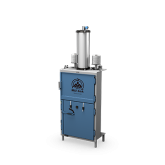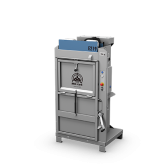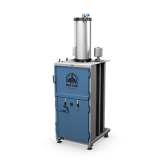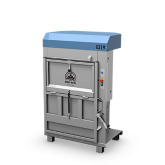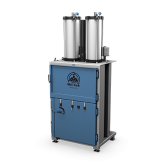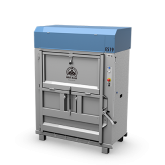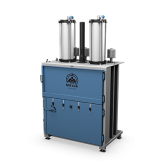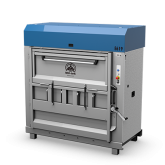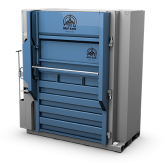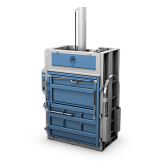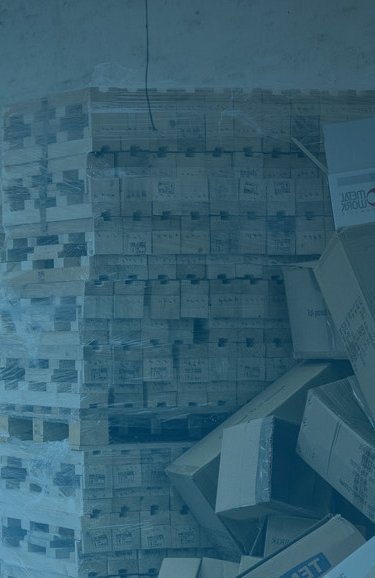
Cardboard Compactors
– How to compact cardboard most efficiently
Companies with a continuous flow of cardboard waste need compaction solutions
Managing waste efficiently and sustainably is a significant concern for businesses across various sectors.
A cardboard compactor is the common solution
One of the common solutions embraced by companies, especially those in retail, manufacturing, and distribution, is the use of large cardboard compactors. These are typically stationed outside business premises to handle and reduce the volume of cardboard waste generated daily.
While there’s no doubt that compacting your cardboard waste is a good idea, there’s many ways to do it.
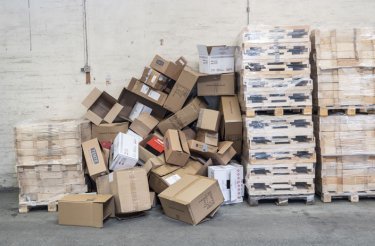
Here’s why a traditional cardboard compactor might not be the best solution
Besides being able to reduce the volume of cardboard waste generated daily, outdoor compactors often come with distinct downsides that can affect operational efficiency and cost-effectiveness:
The logistical challenge of transporting waste to the compactor; This process can be particularly time-consuming for larger facilities or businesses that generate significant amounts of cardboard waste.
Employees need to spend a considerable amount of time collecting and sorting the cardboard, which can detract from their other duties.
If the compactor is placed outside the facility (which is often the case), transporting waste to the compactor may be more difficult, less safe or lead to delays during inclement weather conditions such as heavy rain or extreme temperatures.
Cardboard compactor contracts limit business flexibility with fixed schedules and pick up rates. If a business experiences a sudden increase in waste production, the fixed pickup schedule may not accommodate the extra volume, leading to overflow problems or the need for unscheduled additional service, which can be costly.
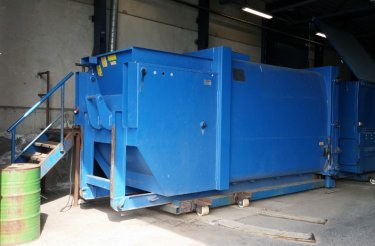
Compact cardboard with a baler and achieve much greater efficiency
Balers that are placed inside the facility offer several benefits that can significantly enhance business operations, compared to a big compactor.
Balers offer greater lean efficiency than a compactor
Incorporating indoor cardboard balers into a business’s waste management system embodies the principles of lean waste management, which emphasizes minimizing waste not only in terms of materials but also in terms of time and motion. Businesses can achieve a more streamlined, efficient workflow that reduces unnecessary movements and time delays. This approach not only boosts productivity but also aligns with sustainable practices by decreasing the environmental impact associated with transporting waste.
Moreover, lean waste management focuses on continuous improvement. Indoor balers can be adjusted and scaled as a business evolves, supporting ongoing optimization of waste processes. This adaptability ensures that waste management remains efficient and responsive to the changing needs of the business, without overburdening the system with excess capacity or underutilizing resources.
Find a varied selection of balers for cardboard below:
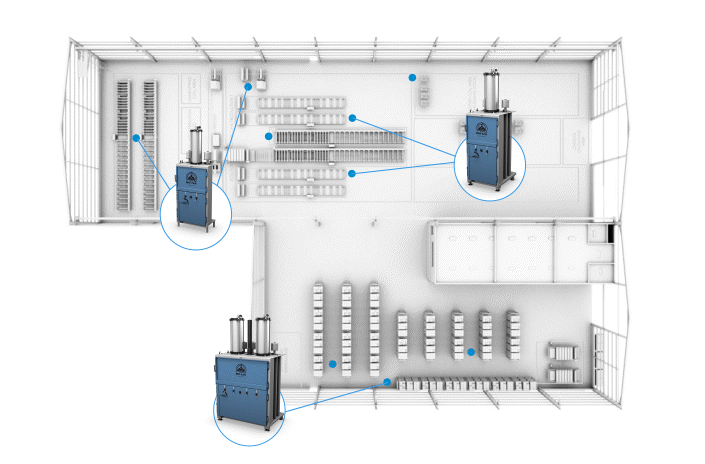
4 Advantages of indoor cardboard balers:
1. Improved Operational Efficiency
Convenience:
Indoor balers are typically located closer to the source of waste generation, reducing the time and effort employees spend transporting cardboard waste. This proximity allows for quicker and more frequent disposal, which can be particularly advantageous during peak business hours.
Continuous Operation:
Unlike outdoor compactors, indoor balers are not affected by external weather conditions, allowing for uninterrupted operation regardless of rain, snow, or extreme temperatures. This ensures consistent waste management without delays.
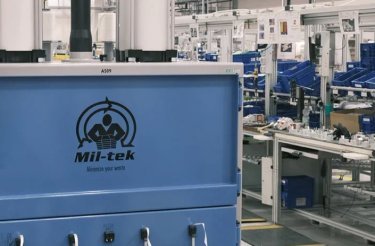
2. Enhanced Cost-Effectiveness
Lower Transportation Costs:
With an indoor baler, businesses can store compacted bales until a sufficient quantity is accumulated to justify a pickup, thereby reducing the frequency and cost of waste collection.
Revenue Generation:
Baled cardboard is often more marketable than loosely compacted cardboard. Companies can sell these bales to recycling firms, potentially turning waste management into a revenue-generating activity.
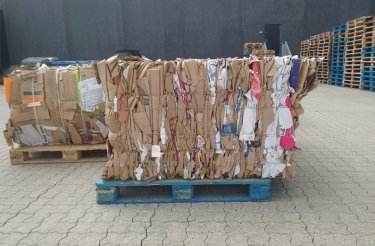
3. Better Space Utilization
Space Efficiency:
Indoor balers can be integrated into the existing spatial layout of a business, utilizing vertical space more effectively. This compact footprint allows businesses to maximize the use of their operational areas without the need for extensive outdoor space.
Customizable Solutions:
Balers come in various sizes and capacities, providing businesses with the flexibility to choose a model that best fits their specific space and volume requirements.
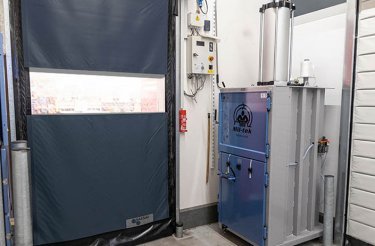
4. Environmental Benefits
Reduced Carbon Footprint:
By decreasing the frequency of pickups and allowing for better scheduling, indoor balers can help lower the carbon emissions associated with transporting waste. More efficient recycling and less frequent haulage contribute to a lower overall environmental impact.
Improved Waste Containment:
Indoor balers help maintain a cleaner and more controlled waste management area. This containment reduces the risk of environmental contamination and prevents problems like litter or pests, which can be associated with outdoor compactors.
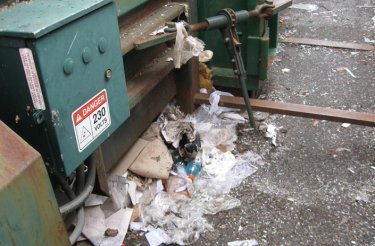
We’re ready to help!
Get in touch to learn how Mil-tek can help your business save time, space and money by compacting cardboard waste!
Fill out the form and we will get back to you.
